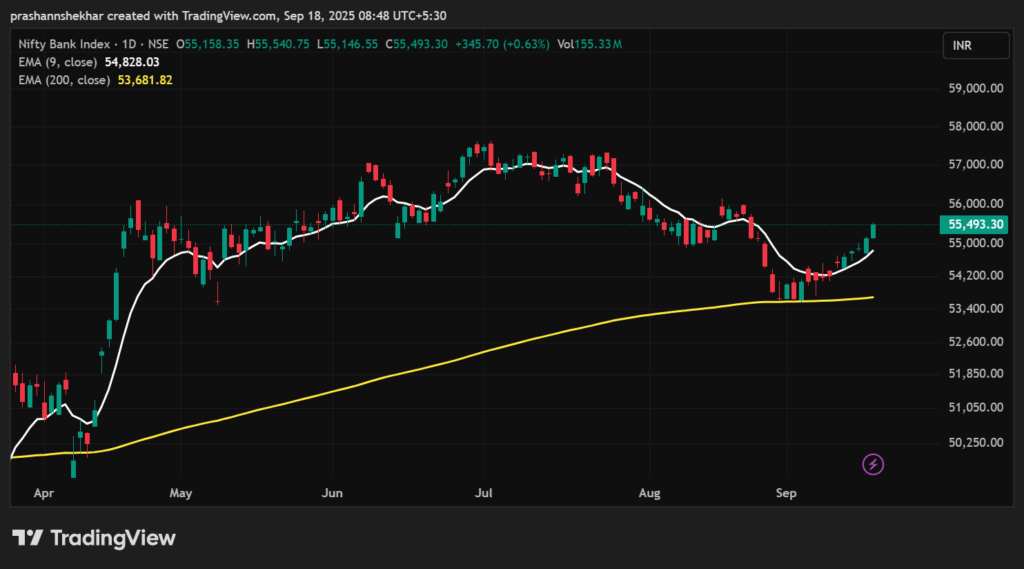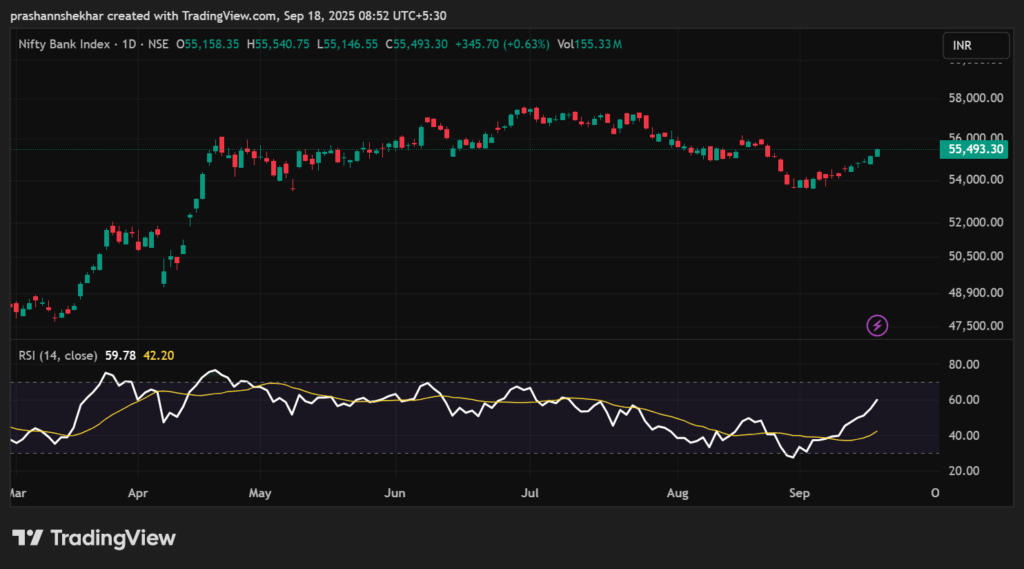📌 Introduction
Markets are never still — they expand, contract, and move in cycles of volatility. To capture these movements, traders often rely on Bollinger Bands.
Created by John Bollinger, Bollinger Bands are one of the most popular volatility indicators. They help traders understand whether prices are high or low relative to previous levels and identify potential breakouts, reversals, and trend continuations.
🔹 What are Bollinger Bands?
Bollinger Bands consist of three lines plotted on a price chart:
- Middle Band (SMA): Usually a 20-period Simple Moving Average (SMA).
- Upper Band: SMA + (2 × Standard Deviation).
- Lower Band: SMA – (2 × Standard Deviation).
👉 The bands automatically expand during high volatility and contract during low volatility.
- When bands are wide → market is volatile.
- When bands are narrow → market is consolidating (potential breakout ahead).
🔹 How to Read Bollinger Bands
- Price near Upper Band → Overbought / resistance zone.
- Price near Lower Band → Oversold / support zone.
- Price bouncing between bands → Range-bound trading.
- Bands squeeze tight → Expect big breakout or breakdown.
🔹 Popular Bollinger Band Strategies
1. Bollinger Band Squeeze (Breakout Strategy)
When the bands contract tightly, it signals low volatility. This is often followed by a sharp breakout.
- If the price breaks above the upper band after a squeeze → bullish breakout.
- If the price breaks below the lower band after a squeeze → bearish breakdown.
👉 Many intraday traders love this setup for momentum trades.
2. Bollinger Band Bounce (Reversal Strategy)
In range-bound markets, the price tends to bounce between the upper and lower bands.
- Buy near the lower band (oversold zone).
- Sell near the upper band (overbought zone).
⚠️ Works best in sideways markets, not in strong trends.
3. Bollinger Bands with RSI
Combining Bollinger Bands with RSI improves accuracy.
- If price touches the lower band and RSI < 30 → strong buy signal.
- If price touches the upper band and RSI > 70 → strong sell signal.
4. Bollinger Band Riding (Trend Strategy)
In strong trends, prices “ride the band”:
- In an uptrend, price keeps hugging the upper band → bullish momentum.
- In a downtrend, price keeps hugging the lower band → bearish momentum.
👉 Don’t fight the trend if price is riding the bands.
🔹 Best Settings for Bollinger Bands
- Default Setting: 20 SMA with 2 Standard Deviations (works for most traders).
- Intraday Trading: 10–20 SMA with 2 Std Dev.
- Swing Trading: 20 SMA with 2 Std Dev.
- Long-term Investing: 50 SMA with 2.5 Std Dev.
💡 Pro Tip: Adjust band settings based on stock volatility. Higher volatility = wider bands.
🔹 Advantages of Bollinger Bands
✅ Works in all timeframes.
✅ Helps identify volatility shifts.
✅ Useful for both breakout and reversal trading.
✅ Easy to combine with RSI, MACD, or Volume.
🔹 Limitations of Bollinger Bands
❌ Not a standalone indicator — needs confirmation.
❌ In strong trends, overbought/oversold signals can mislead.
❌ False breakouts are common during news events.
📊 Conclusion
Bollinger Bands are an essential tool for every trader’s toolkit. They help you:
- Spot volatility squeezes before breakouts.
- Identify reversal points in range-bound markets.
- Confirm momentum in trending markets.
👉 But remember: Always combine Bollinger Bands with other tools like RSI, MACD, or Volume for better accuracy.
📌 Disclaimer: This blog is for educational purposes only. ArthVed 9X is not a SEBI-registered advisor. Please consult your financial advisor before making investment decisions.


